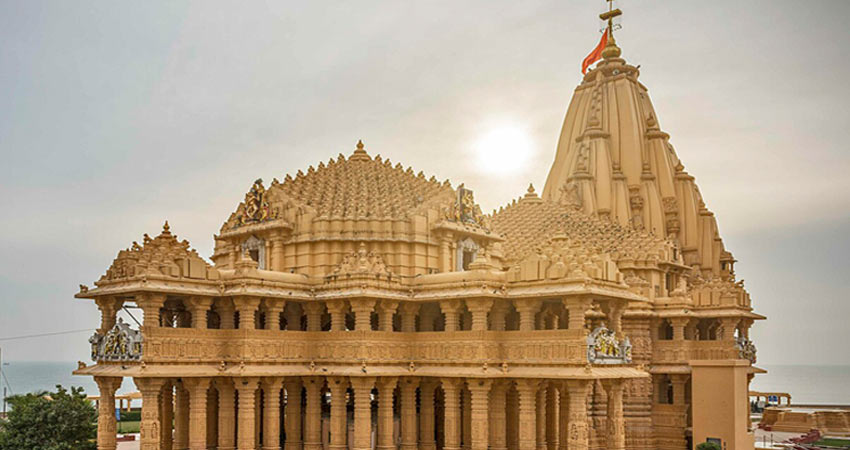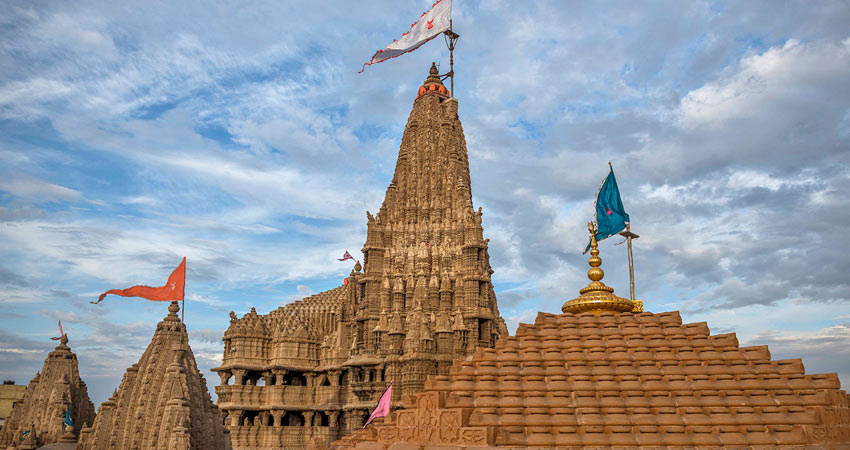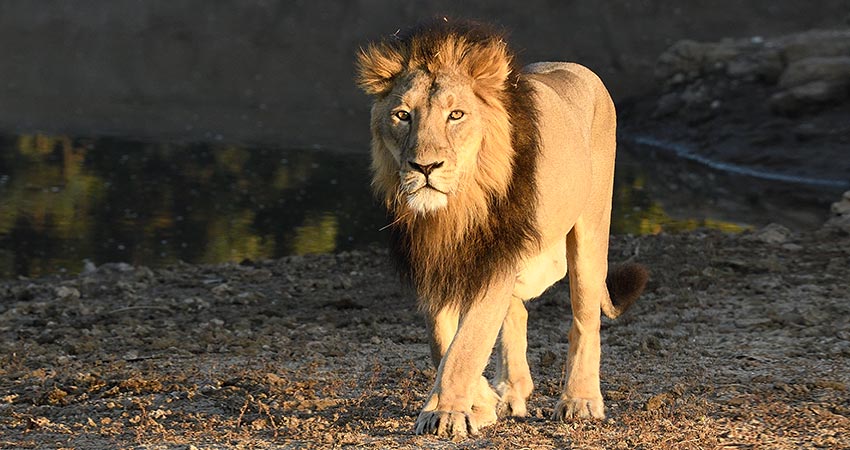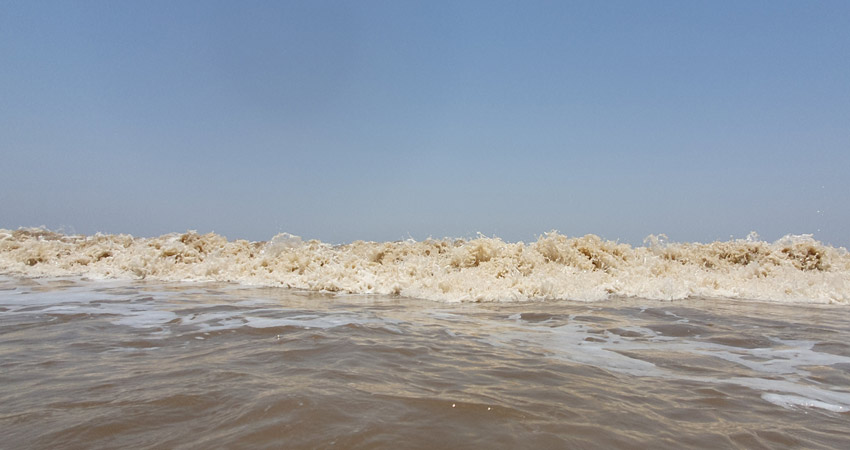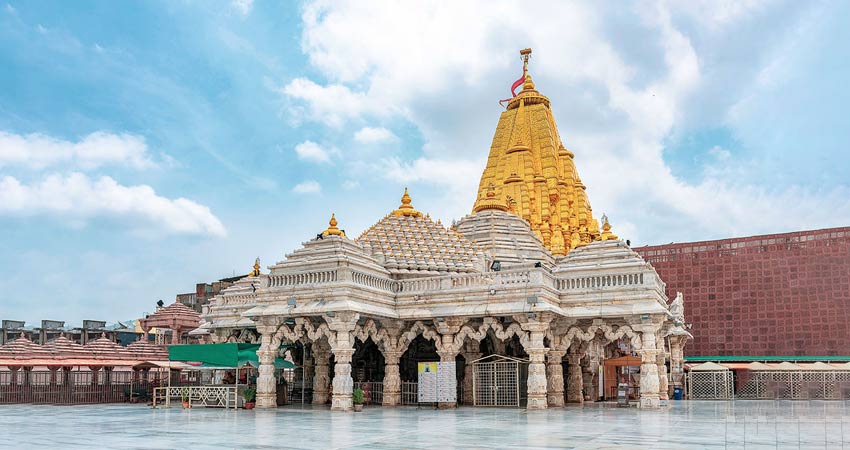- 15
- 3
- 2
- 9
- 12
- 2
- 1
- 9
- 1
- 7
- 12
- 3
Somnath
About the Place
The intricately carved, honey-colored Somnath Temple, located on the western edge of Gujarat, is believed to be the site where the first of the twelve holy jyotirlingas emerged in India—a spot where Shiva appeared as a fiery column of light. The temple sits at the confluence of the Kapila, Hiran, and Sarasvati rivers, with the waves of the Arabian Sea ebbing and flowing against its shores. The ancient temple’s history can be traced back to 649 BC, though it is believed to be even older. The present structure was reconstructed in 1951. Colorful dioramas depicting the story of Shiva line the north side of the temple garden, though they can be difficult to see through the hazy glass. A one-hour sound-and-light show, narrated by Amitabh Bachchan, highlights the temple nightly at 7:45 PM.

Brief History
According to legend, Somraj (the moon god) first built a temple in Somnath made of gold, which was later rebuilt by Ravana in silver, by Krishna in wood, and by Bhimdev in stone. The current serene, symmetrical structure was built to traditional designs on the original coastal site, painted in a creamy color and featuring intricate sculptures. The large, black Shiva lingam at its heart is one of the 12 most sacred Shiva shrines, known as jyotirlingas.
The temple was described so glowingly by Al-Biruni, an Arab traveler, that it attracted the attention of Mahmud of Ghazni, who invaded in 1024. At that time, the temple was so wealthy it employed 300 musicians, 500 dancing girls, and 300 barbers. Mahmud of Ghazni attacked the town and temple after a two-day battle in which 70,000 defenders are said to have died. He looted the temple’s fabulous wealth and destroyed it. This began a pattern of destruction and rebuilding that continued for centuries. The temple was razed again in 1297, 1394, and finally in 1706 by the Mughal ruler Aurangzeb. It was not rebuilt until 1950.
Best Time to Visit
The best time to visit Somnath Temple is during the cooler months from October to February, although the site is open year-round. Shivratri (usually in February or March) and Kartik Purnima (close to Diwali) are celebrated with great enthusiasm here. For additional details, kindly visit the provided source.
